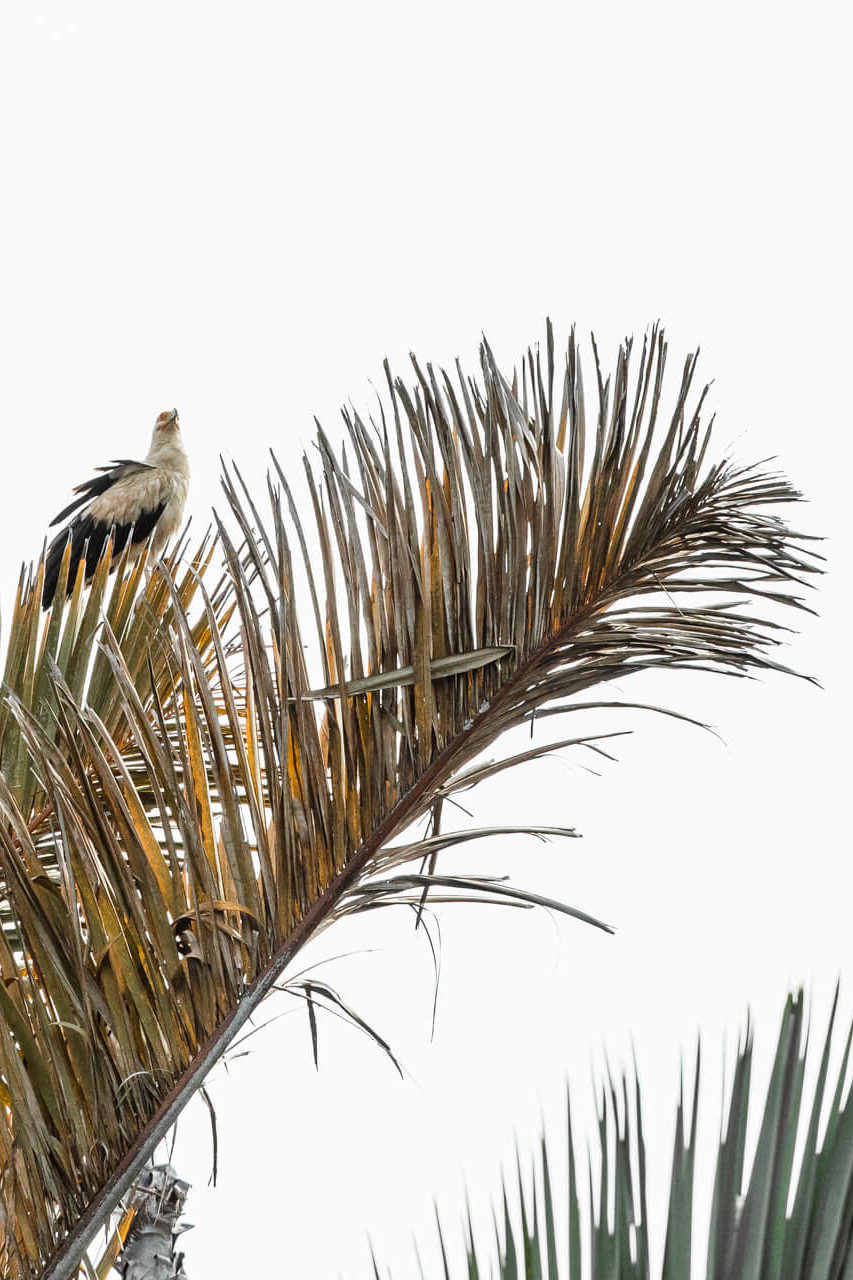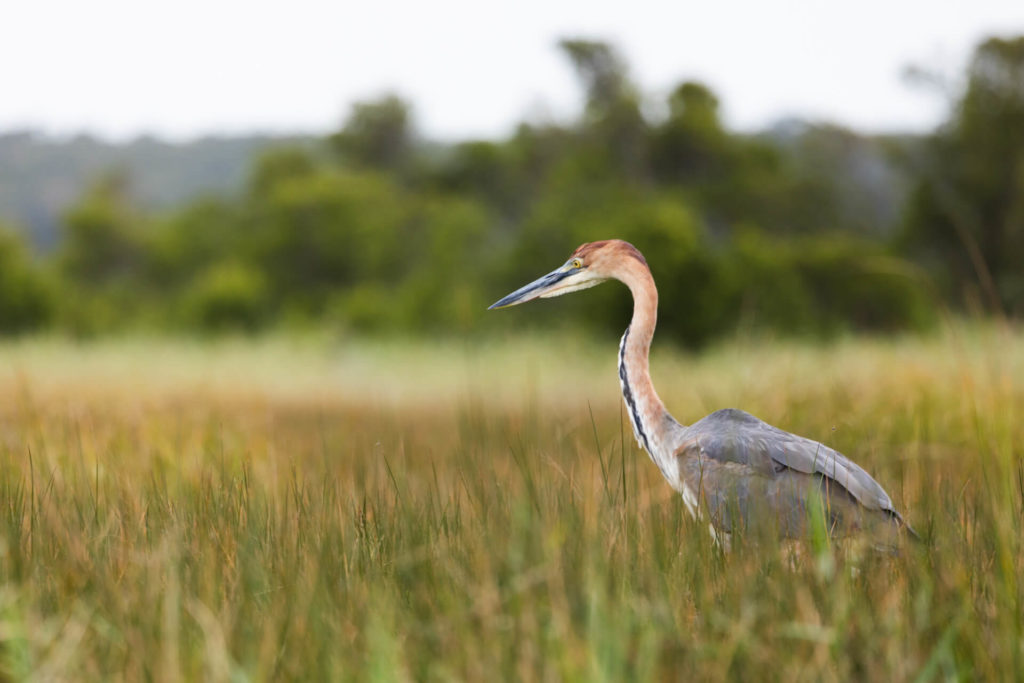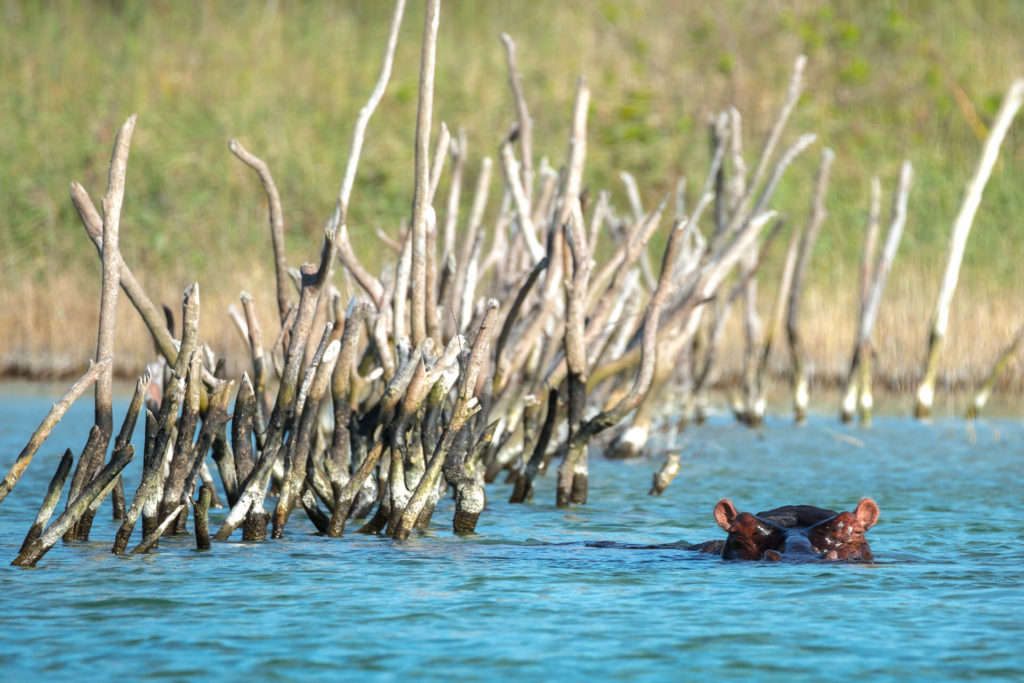Explore the Kosi Lakes by boat
Posted in: Birdlife | Experiences | Wildlife
Posted on: May 12, 2023
After a delicious Kosi Forest Lodge breakfast, it is time to jump onto the game viewer with our entertaining and extremely knowledgeable guide Jerome, for a short 4×4 drive over the expansive coastal grass and woodland covered dunes to explore the world-renowned Kosi Lakes by boat.

The short walk from the vehicle to the boat launch is really nothing short of mind-blowing, and a little humbling. The path leads through a pristine forest of giant Raphia Palm trees which honestly feels like something straight out of the Jurassic era. It is hard to not be awe-struck by the towering Raphia Palms which boast some of the longest leaves of any tree on the planet. What makes the Raphia Palm even more unique and remarkable is that an individual tree can grow for 25-40 years before flowering just once in an extravagant and colourful display. This attracts another unique visitor in the form of the rare Palm-nut Vulture – a highly prized addition to any birder’s life list – which, as the name suggests, feasts on the fruit of the flowering tree. The tree then begins the process of slowly dying off and making way for numerous ambitious seedlings to compete for its space in the forest, thereby completing the circle of life.



The Kosi Lake system consists of four distinct lakes joined by narrow winding channels and an estuary which is open to the ocean by way of the Kosi Mouth. One of the things that makes this lake system so unique is the gradual transition from fresh water in the fourth lake (furthest from the ocean) to salt water in the first lake which adjoins to the tidal estuary. This provides a wide range of habitat which attracts and supports a huge diversity of marine and aquatic life.

Once on the boat with our skipper Phaqa (or “PQ” for those who can’t get their tongues around the explosive Zulu click sound) we head out over the crystal-clear waters of Lake Kosi, the 3rd lake from the mouth and the largest by some margin.

Glancing down I can immediately see a multitude of fish of all shapes and sizes and it is abundantly clear why the Tsonga people of the area have been able to survive off the catch from the lake system for many generations. In fact, the Tsonga people have turned fishing into an art in the form of well-established fish traps which are highly treasured and are passed down from father to first born son for generation after generation. I say art because the traps are intricately designed and carefully constructed in such a way that smaller fish can escape to ensure continuity and sustainability while bigger fish are harvested for the table.

As we reach the northern most point of Lake Kosi, PQ guides the boat into a shallow channel only a few times the width of our boat. The channel is lined with reeds and grassy banks and meanders quite substantially as we make our way towards the 2nd lake. The lake system is a vitally important breeding ground for many fish species and in the shallow channel it is possible to spot species such as Rock Salmon, Kingfish and Yellow-Fin Bream, etc.
With such abundant and diverse sources of food present, bird life on the lake system is prolific. White-breasted and Reed Cormorants watch keenly over the fish traps while Pied Kingfishers hover deftly above the water scouting for a suitable target to dive bomb. A Goliath Heron strides pensively on the adjacent bank while Fish Eagles circling overhead call out the iconic sound of Africa.



Another highlight of exploring the Kosi Lakes by boat is the abundance of mangroves. There are 5 different species of mangroves – more than any other location in South Africa and 2 of those are found nowhere else in the country. In the channel that joins the second and first lakes we have the opportunity to get off the boat and into the amazingly clear water. With the help of a mask and snorkel it is possible to see the huge quantities of fish hatchlings taking cover among the roots of the mangroves. This is a first-time experience for me and one not easily forgotten.


As we reach the top of the first lake I notice a vast shimmering mass of pale pink in the shallows – a huge flock of Lesser Flamingos takes flight and flies a wide circle right around us only to land back where they started as if it was all just a choreographed display for our benefit. A short distance away, a handful of Greater Flamingos continues wading along seemingly un-interested in their lesser cousins’ aerial show.



Just as we are about to begin the journey back, two rather large hippos pop their heads up to check us out and greet us with their typical bellowing honk. Hippos are such bulky and comical looking characters but best viewed from a comfortable distance. Back on the third lake, we make one last detour. Parking the boat on the eastern shore of the lake, we walk up and over the thin vegetated dune which separates the lake from the ocean at Bhanganek and enjoy a tasty and very welcomed picnic lunch on the beach. This is followed by a quick dip in the deep blue Indian Ocean before returning to the boat and heading home to the lodge with the promise of sipping delicious Kosi cocktails on the pool deck while watching the sun gradually sink over Lake kuShenge. What a picture-perfect way to end an unforgettable day.



Read more about how you can explore the Kosi Lakes with us by boat here





